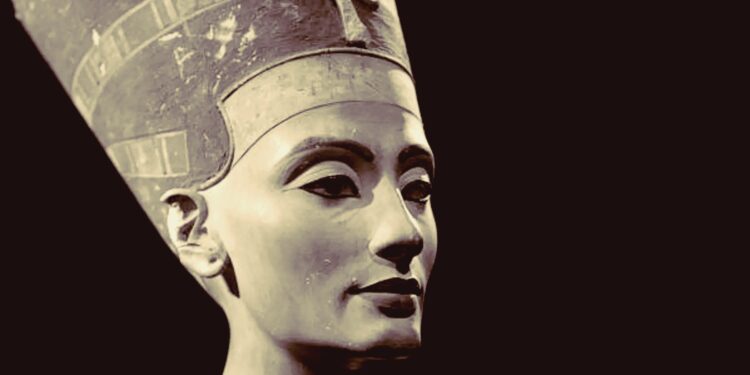Nefertiti, the renowned queen of ancient Egypt, continues to captivate the world with her beauty, power, and mysterious legacy. As the Great Royal Wife of Pharaoh Akhenaten during the 14th century BCE, she left an indelible mark on history, despite the enigmatic nature surrounding her life.
Born around 1370 BCE, little is known about Nefertiti’s early life, including her exact origins. Her name, meaning “the beautiful one has come,” reflects the elegance and grace for which she is celebrated. However, her true parentage remains a subject of debate among historians.
Nefertiti gained fame during the reign of her husband, Pharaoh Akhenaten, as she played a prominent role in the religious revolution known as the Amarna period. The couple introduced the concept of Atenism, a monotheistic worship of the sun god Aten. Nefertiti’s influence is evident in the distinctive art of the time, which portrayed her with a slender neck, high cheekbones, and an elongated face—features that deviated from traditional Egyptian artistic norms.
Her role extended beyond religious reforms. Nefertiti held considerable political power and often appeared alongside her husband in official ceremonies and even in military matters. Some theories even suggest that she may have ruled as a co-regent with Akhenaten. Nevertheless, her reign and influence abruptly ended around 1336 BCE, leaving historians puzzled. Speculation ranges from her death to her sudden disappearance from historical records.
Nefertiti’s most iconic representation is the bust discovered in 1912 by the German archaeologist Ludwig Borchardt. This exquisite sculpture, housed in the Neues Museum in Berlin, showcases her timeless beauty and has become a symbol of ancient Egypt worldwide. The striking features, flawless craftsmanship, and enigmatic smile immortalize her as one of the most celebrated and recognizable figures of antiquity.
The life and fate of Nefertiti remain shrouded in mystery, fueling ongoing fascination and speculation. Although her reign was relatively brief, the impact she made on Egyptian history and culture endures. Nefertiti’s influence on art, religion, and even gender roles during the Amarna period cannot be overstated.
Nefertiti, the enigmatic queen, continues to evoke a sense of wonder and admiration centuries after her time. Her legacy as a powerful ruler, a symbol of beauty, and a trailblazer in Egyptian history cements her status as one of the most iconic figures of antiquity. As we gaze upon her majestic bust, we are reminded of the enduring allure of ancient Egypt and the enigma that is Queen Nefertiti.











Recent Comments